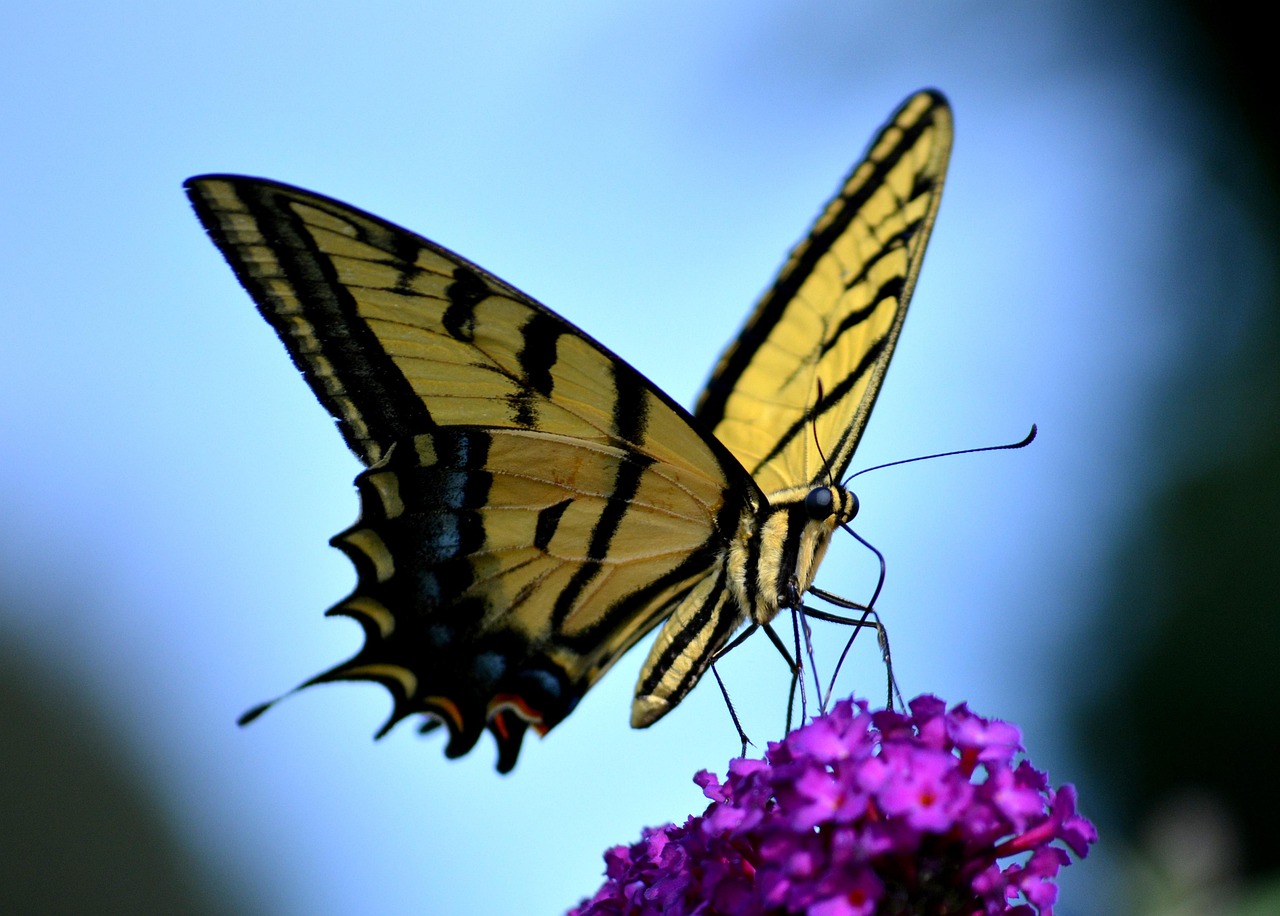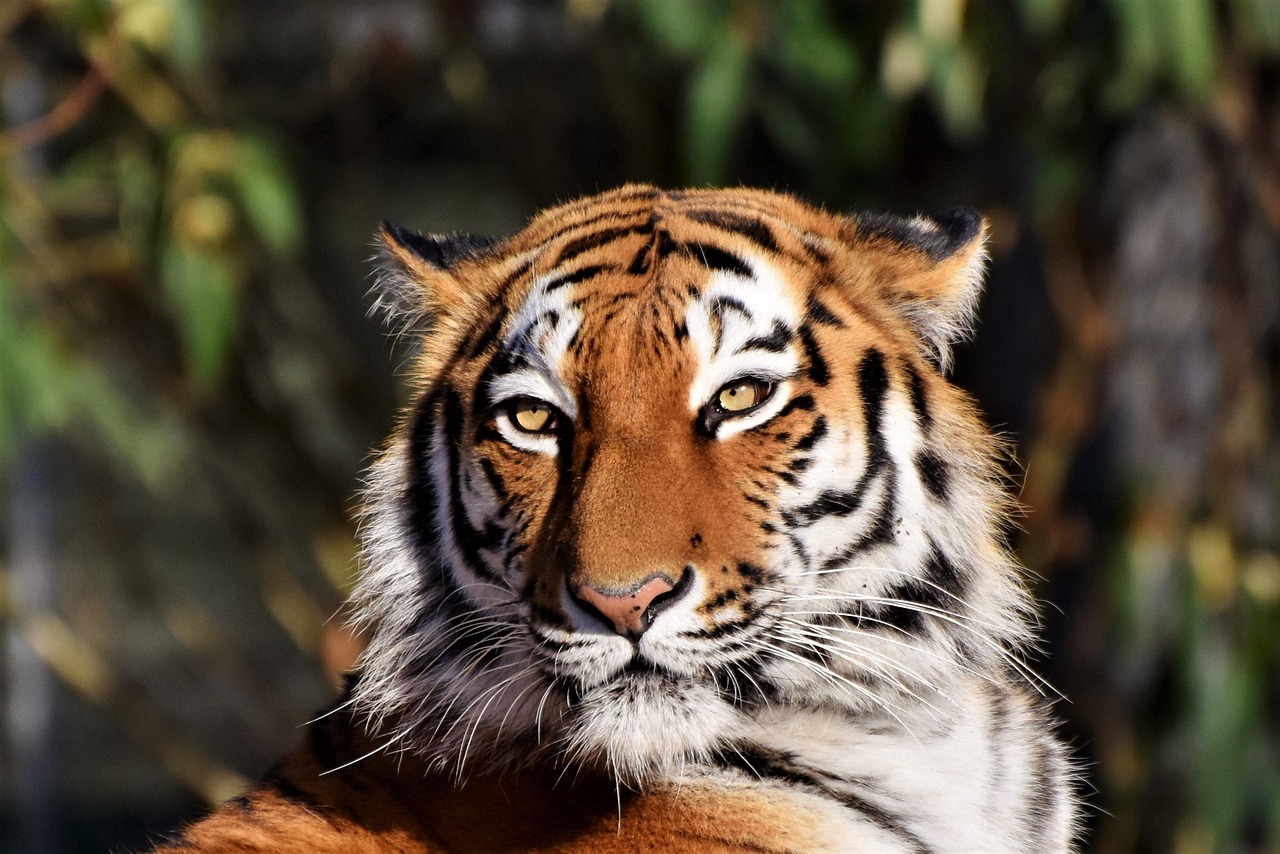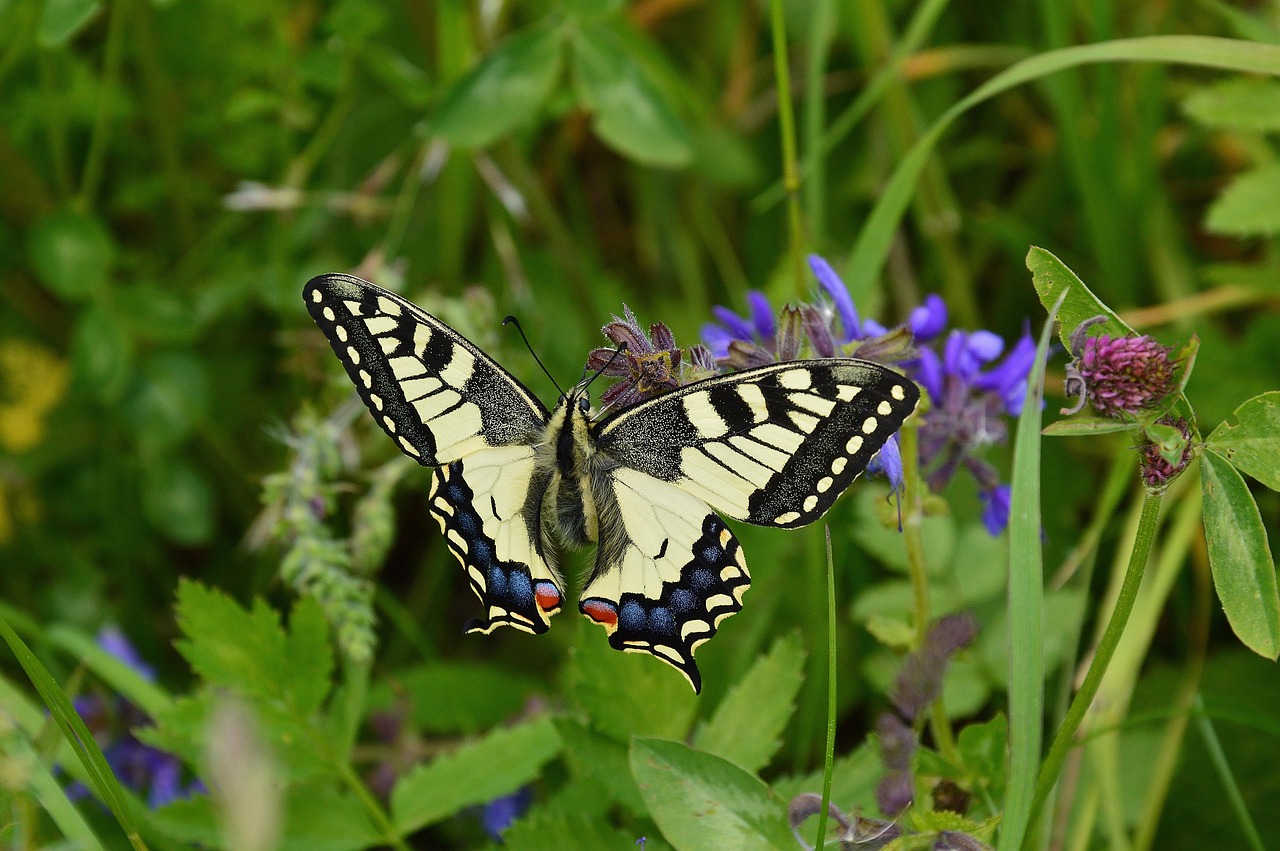Tiger Swallowtails thrive in a variety of habitats, such as open woodlands, meadows, and gardens. The best places to spot them include areas with abundant flowering plants, especially during late spring and summer months.
Understanding Tiger Swallowtail Butterflies

The Tiger Swallowtail butterfly, scientifically known as Papilio machaon, is one of the most recognizable butterflies in North America. With its striking yellow and black coloration, it captures the attention of nature enthusiasts and casual observers alike. These butterflies are not only beautiful but also essential pollinators in their ecosystems.
Tiger Swallowtails are typically found in a range of habitats. They prefer areas where they can find ample food sources, particularly nectar-rich flowers. Understanding their preferred habitats can greatly enhance the chances of encountering these magnificent creatures.
Typical Habitats of Tiger Swallowtails
Tiger Swallowtails inhabit a variety of environments. Their adaptability allows them to thrive in different regions. Here are some typical habitats where they are commonly found:
- Open woodlands
- Meadows and grasslands
- Gardens and parks
- Riparian zones along rivers and streams
- Coastal areas with flowering plants
Each of these habitats offers unique opportunities to observe the Tiger Swallowtail in its natural setting. The availability of host plants and flowering plants plays a critical role in their distribution.
Best Places to Spot Tiger Swallowtails
When looking for Tiger Swallowtails, it is important to know the specific locations where they are most likely to be seen. Here are some of the best places to find them:
- Botanical Gardens: These gardens often cultivate a diverse array of flowering plants that attract butterflies, making them prime spots for observation.
- Nature Reserves: Protected areas with native vegetation provide ideal habitats for Tiger Swallowtails, allowing for easy viewing.
- Parks and Recreational Areas: Local parks with flower beds and open spaces often see high butterfly activity, especially in warmer months.
- Flowering Fields: Fields filled with wildflowers are hotspots for nectar feeding, drawing in these butterflies in droves.
- Lakeshores and Riversides: These areas often have lush vegetation and a variety of flowering plants that support butterfly populations.
The presence of various flowering plants is crucial for attracting these butterflies. They are particularly drawn to flowers such as milkweed, coneflowers, and black-eyed Susans.
The Importance of Nectar Sources
Nectar sources play an essential role in the life cycle of Tiger Swallowtails. The availability of flowers directly influences their feeding habits and overall population health. Here are some key facts about nectar sources:
| Flower Type | Bloom Time | Attraction Level |
|---|---|---|
| Milkweed | Late Spring – Summer | High |
| Coneflower | Summer | Medium |
| Black-eyed Susan | Summer – Fall | High |
By planting these types of flowers in gardens or preserving natural habitats, individuals can create welcoming environments for Tiger Swallowtails and other beneficial pollinators.
Behavior and Life Cycle of Tiger Swallowtails
Understanding the behavior and life cycle of Tiger Swallowtails provides insight into their habitat preferences. These butterflies undergo a complete metamorphosis, which includes four distinct stages: egg, larva (caterpillar), pupa (chrysalis), and adult butterfly. Each stage has specific habitat needs and behaviors that contribute to their survival.
Egg Stage
The life cycle begins when a female Tiger Swallowtail lays her eggs on host plants. These plants are crucial for the caterpillars’ development. Common host plants include:
- Willow
- Poplar
- Aspen
- Birch
- Fruit trees like cherry and peach
The eggs are typically laid on the underside of leaves to protect them from predators. This stage lasts about a week, depending on environmental conditions.
Caterpillar Stage
Once the eggs hatch, the caterpillars emerge. The caterpillar stage is marked by rapid growth, as they feed voraciously on the leaves of host plants. This stage can last from two weeks to several months, depending on the climate and food availability. During this time, caterpillars exhibit interesting behaviors:
- Caterpillars can change color to blend in with their surroundings.
- Some species may mimic other toxic insects to deter predators.
- They often feed in the evening or at night to avoid daytime predators.
As they grow, they will molt several times, shedding their skin to accommodate their increasing size.
Pupa Stage
After sufficient growth, the caterpillar will find a safe location to undergo metamorphosis. It forms a protective chrysalis, which can be found hanging from branches or tucked under leaves. This stage can last from a few days to several months. Factors such as temperature and humidity influence the duration of this stage.
Adult Butterfly Stage
Once the metamorphosis is complete, the adult Tiger Swallowtail emerges from the chrysalis. The newly formed butterfly expands its wings and allows them to dry before taking its first flight. Adult butterflies typically live for about two weeks to several months, depending on environmental conditions and predation.
Feeding Habits of Tiger Swallowtails
Tiger Swallowtails are primarily nectar feeders as adults. They are attracted to a variety of flowering plants, seeking out those with high sugar concentrations. Their feeding habits significantly influence their habitat choices. Here are some key points about their feeding preferences:
- Nectar Sources: They prefer flowers that are rich in nectar, such as milkweed, lantana, and zinnias.
- Feeding Behavior: Tiger Swallowtails often feed in the morning or late afternoon when temperatures are warmer.
- Pollination Role: While feeding, they inadvertently pollinate flowers, contributing to plant reproduction.
This behavior highlights the importance of maintaining diverse floral resources in their habitats to support not only Tiger Swallowtails but also other pollinators.
Environmental Factors Affecting Habitat

The habitats of Tiger Swallowtails are influenced by various environmental factors. Understanding these can help conservation efforts and improve butterfly populations. Some key environmental factors include:
- Climate: Temperature and precipitation patterns affect the availability of host plants and flowering plants.
- Land Use: Urban development, agriculture, and logging can reduce natural habitats available for these butterflies.
- Pesticide Use: The application of pesticides can harm both adult butterflies and their larvae, impacting population health.
By considering these factors, individuals and communities can take steps to protect and enhance habitats for Tiger Swallowtails and other butterfly species.

Conservation Efforts for Tiger Swallowtails
As the habitats of Tiger Swallowtails face numerous threats, conservation efforts are crucial to ensure their survival. Various initiatives and practices can help protect these beautiful butterflies and their environments. Engaging in conservation not only benefits Tiger Swallowtails but also promotes biodiversity as a whole.
Habitat Restoration
One effective way to support Tiger Swallowtails is through habitat restoration. This involves revitalizing areas that have been degraded or altered. Key steps in habitat restoration include:
- Native Plant Reintroduction: Planting native flowers and host plants can help restore natural ecosystems that support Tiger Swallowtails.
- Invasive Species Management: Removing invasive plant species helps native flora thrive, which is essential for the butterflies’ survival.
- Creating Butterfly Gardens: Establishing gardens that cater specifically to butterflies can enhance local habitats and provide food sources.
Community involvement is vital in these restoration efforts, as collective action can lead to significant improvements in local ecosystems.
Education and Awareness
Increasing public awareness about the importance of Tiger Swallowtails and their habitats is a critical component of conservation efforts. Educational programs can foster a deeper understanding of the ecological roles that these butterflies play. Some strategies include:
- Workshops and Seminars: Hosting events that educate the public about butterfly biology, behaviors, and conservation techniques can promote butterfly-friendly practices.
- School Programs: Integrating butterfly education into school curriculums encourages young people to appreciate and protect local wildlife.
- Community Events: Organizing butterfly counts or festivals can engage communities and raise awareness about the species.
By spreading knowledge, communities can cultivate a culture of conservation that benefits not only Tiger Swallowtails but other pollinators as well.
How to Attract Tiger Swallowtails to Your Garden
If you want to observe Tiger Swallowtails up close, creating a suitable habitat in your garden is an excellent approach. Here are some effective tips for attracting these butterflies:
Selecting the Right Plants
Choosing the right plants is essential for attracting Tiger Swallowtails. Incorporating a variety of nectar-producing and host plants will create an inviting environment. Consider the following:
- Nectar Plants: Include flowers such as milkweed, purple coneflower, and black-eyed Susans that provide ample nectar.
- Host Plants: Plant species like willow, tulip poplar, and cherry trees to support the caterpillar stage of the lifecycle.
- Diversity: A diverse selection of plants will attract more butterflies and improve the overall health of the garden.
Providing Water Sources
Tiger Swallowtails need water just like any other creature. Including a shallow water source in your garden can help attract them. Here are some ideas:
- Puddling Stations: Create a shallow dish filled with sand and water where butterflies can drink and absorb minerals.
- Bird Baths: A bird bath can serve as a water source for butterflies if kept shallow and filled with pebbles.
Avoiding Pesticides
Avoiding harmful chemicals is crucial for the well-being of Tiger Swallowtails and other pollinators. Here are some recommended practices:
- Natural Pest Control: Utilize organic pest control methods rather than chemical pesticides to protect beneficial insects.
- Encouraging Beneficial Insects: Introduce predatory insects that help control pests naturally without harming butterflies.
By implementing these techniques, you can create a thriving garden that attracts Tiger Swallowtails while supporting local wildlife.
Creating a Butterfly-Friendly Environment

In addition to the specific practices already mentioned, creating a butterfly-friendly environment involves considering the overall layout and design of your outdoor space. Here are some additional tips that can enhance the habitat for Tiger Swallowtails and other butterflies:
- Sunlight Exposure: Tiger Swallowtails are attracted to sunny areas. Ensure that your garden has plenty of sunlight, as butterflies are cold-blooded and need warmth to fly.
- Wind Protection: Planting shrubs or trees can provide shelter from strong winds, creating a more hospitable environment for butterflies.
- Continuous Blooming: Choose a variety of plants that bloom at different times throughout the growing season. This ensures a continuous food supply for butterflies.
By carefully planning your garden, you can create a vibrant ecosystem that not only attracts Tiger Swallowtails but also supports other wildlife, enhancing biodiversity in your area.
The Role of Community in Butterfly Conservation
Conservation of Tiger Swallowtails is not solely the responsibility of individual gardeners or enthusiasts. Community involvement plays a significant role in creating sustainable habitats. Here are some ways communities can come together to support butterfly conservation:
- Community Gardens: Establishing community gardens allows residents to collaborate on planting native flowers and host plants, benefiting local butterfly populations.
- Local Conservation Groups: Joining or supporting local conservation organizations can amplify efforts to restore habitats and protect butterfly populations.
- Awareness Campaigns: Communities can organize campaigns to spread awareness about the importance of butterflies and their ecosystems, encouraging more people to get involved.
Through collective action, communities can create larger, interconnected habitats that provide safe spaces for Tiger Swallowtails and other wildlife.
Engaging in Citizen Science
Citizen science initiatives provide opportunities for individuals to contribute valuable data that can help researchers understand butterfly populations and their behaviors. Engaging in citizen science can take various forms:
- Butterfly Counts: Participating in organized butterfly counts during peak seasons helps track population numbers and distribution.
- Observation Programs: Recording sightings of Tiger Swallowtails and reporting them online contributes to valuable databases used by scientists.
- Monitoring Habitat Changes: Observing and reporting changes in local habitats due to climate or human activity can inform conservation strategies.
By participating in these initiatives, individuals can play a vital role in the ongoing study and preservation of Tiger Swallowtails and their habitats.
Final Thoughts
Tiger Swallowtails are not just beautiful insects; they are vital components of our ecosystems, serving as pollinators and indicators of environmental health. By understanding their habitats, life cycles, and the factors affecting their populations, we can take meaningful steps toward conservation. Whether through personal gardening efforts, community initiatives, or participation in citizen science, everyone can contribute to the protection of these magnificent butterflies.
Creating safe, inviting environments for Tiger Swallowtails requires a combination of knowledge, effort, and community involvement. With dedicated actions from individuals and communities alike, we can ensure that future generations will continue to enjoy the sight of these stunning butterflies gracing our landscapes. Embracing conservation practices not only benefits Tiger Swallowtails but also fosters a healthier planet for all living beings.
